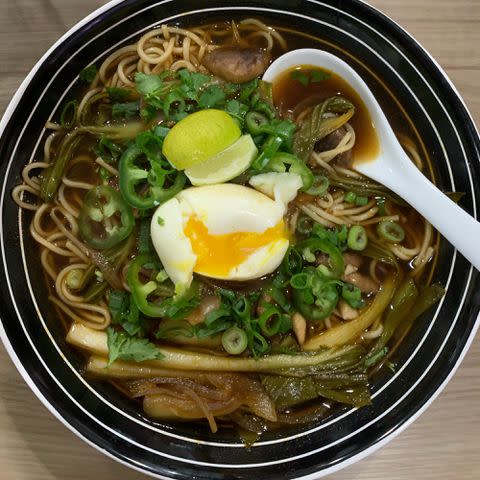The 1-Ingredient Secret Weapon That Quadruples the Flavor of Everything
It adds a savory-salty punch to virtually any dish.

Getty Images/Allrecipes
In my family’s kitchen, there is one condiment that reigns supreme: fish sauce. Its distinct dark, delightfully aromatic taste is found in countless Thai dishes like pad Thai and papaya salad, alongside a plethora of other Southeast Asian dishes. Despite its global popularity, I still think that its rich umami flavor holds untapped potential for home cooks.
Growing up with fish sauce readily available in my kitchen—alongside table salt and pepper—I’ve been cooking for years with the advantage of incorporating this savory condiment into my everyday cooking. From marinara sauces to salad dressings, fish sauce is a next-level booster to an array of recipes.
Related: What's the Difference Between Fermenting and Pickling?
What is Fish Sauce?
To better use this salty sauce, it’s important to understand how fish sauce is broadly made and used. Fish sauce is made through a meticulous fermentation process of anchovies, salt, and water. This mixture ferments in large tanks for a duration ranging from 4 to 12 months, followed by further maturation in clay pots under sunlight for varying periods.
In this process, the breakdown of fish results in the formation of the liquid we know as fish sauce. The longer fish sauce sits, the lighter it becomes, so when you harvest it from the early stages, it is at its darkest, most potent flavor that is perfect for imparting that signature umami-saltiness to classic Thai dishes like pad kra pow. My family opts for Thai-style fish sauce, also called nam pla, such as Squid Brand that are harvested early, making it incredibly strong—so strong that the aroma alone can fill a room.

If you’re new to the world of fish sauce, I recommend trying a lighter kind, like Vietnamese-style fish sauce, also called nuoc cham such as the 3 Crabs brand. Unlike its Thai counterpart, this brand of fish sauce undergoes a lengthier fermentation process that lends it a lighter and sweeter taste and color. This process makes it more appealing to a wide variety of palettes, and it has a taste so nuanced and subtle that it can and is used as a raw condiment to add a bit of salt to sauces, dips, soups, and more.
How to Use Fish Sauce in Everyday Cooking
Fish sauce is an umami booster capable of adding salty-savory flavor to virtually any dish. In fact, we covered how fish sauce may just be the secret ingredient for the best boxed mac and cheese. Similar to soy sauce, Parmesan cheese, and Worcestershire sauce, fish sauce contributes a savory richness to a plethora of dishes.
Its rich, salty taste adds depth and complexity that compliments other ingredients while the fermented nature of fish sauce also introduces subtle hints of sweetness, balancing the overall flavor profile of the dish without overpowering it. This versatility allows for seamless adding to an array of dishes including everything from hearty stews and soups to even sauces and salad dressings.

Dotdash Meredith Food Studios
If you want to get started using fish sauce in your everyday cooking, I recommend finding a brand and style that you like—lighter or darker—and then gradually experimenting in the kitchen with it. I suggest starting with seasoning your soups or stews one teaspoon at a time, tasting in between to see if you want to add more. Fish sauce is all about flavoring and personal preference, and after you try it out for yourself, I’m confident that you’ll be on your way to adding it to everything.
Read the original article on All Recipes.

 Yahoo Lifestyle
Yahoo Lifestyle 
